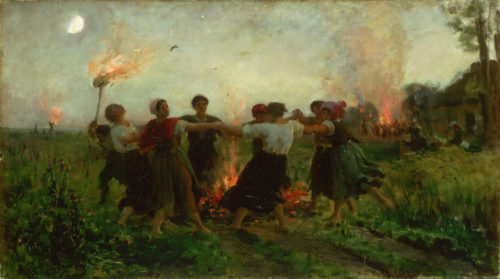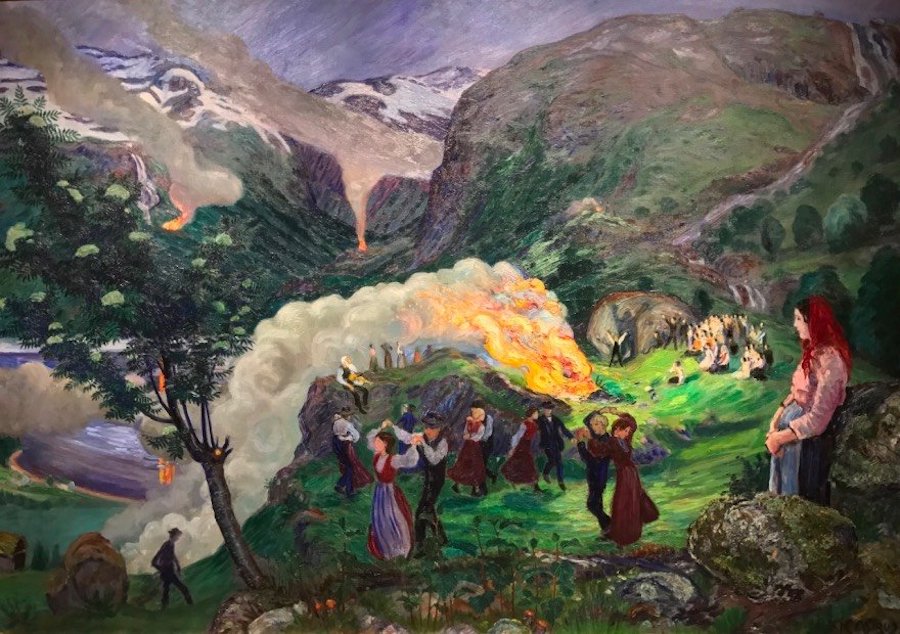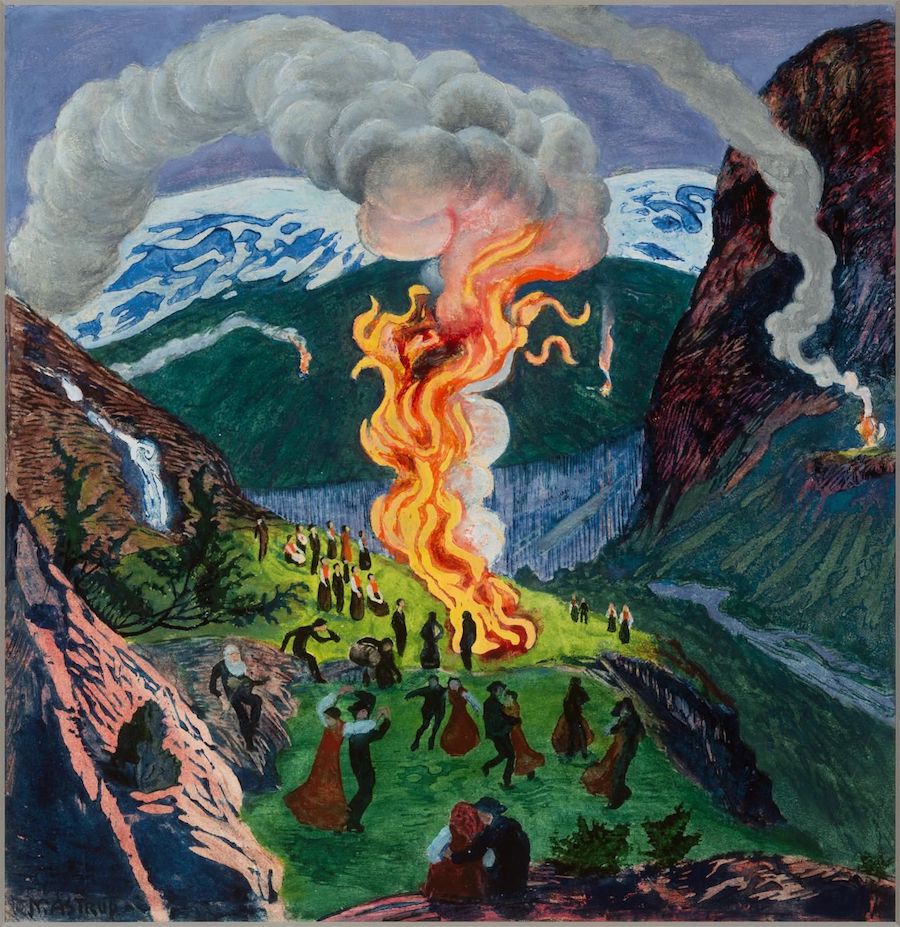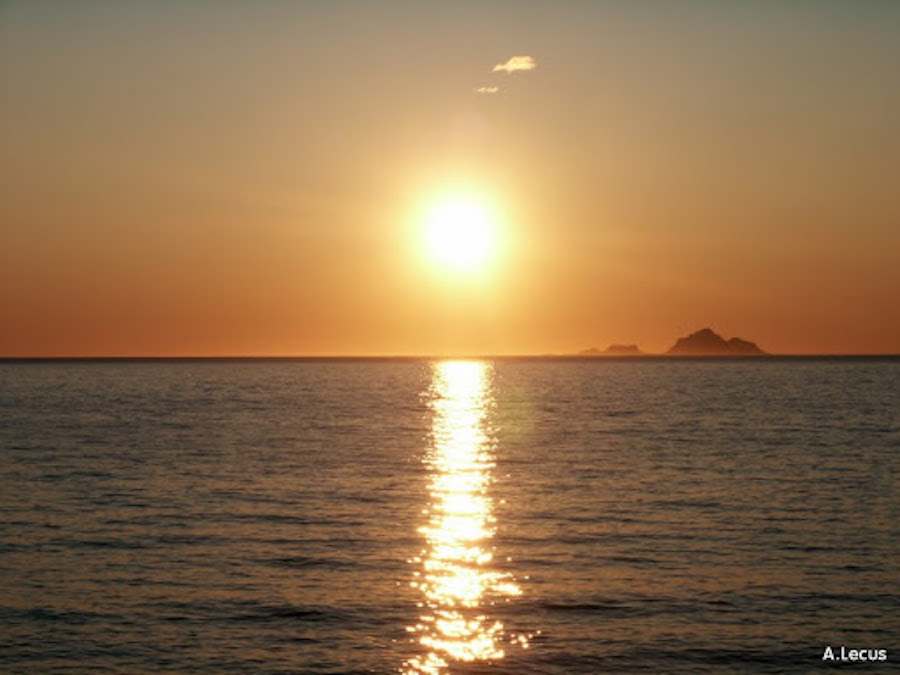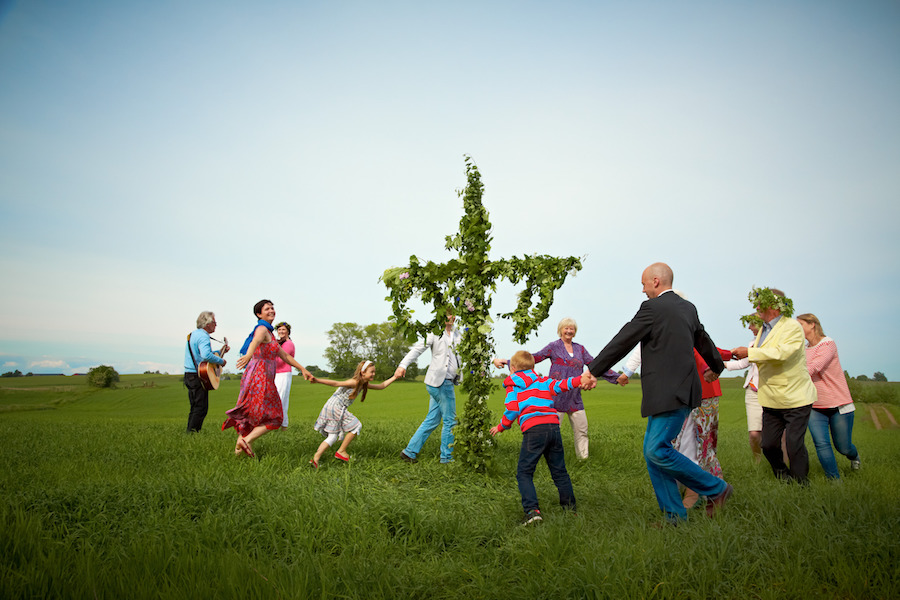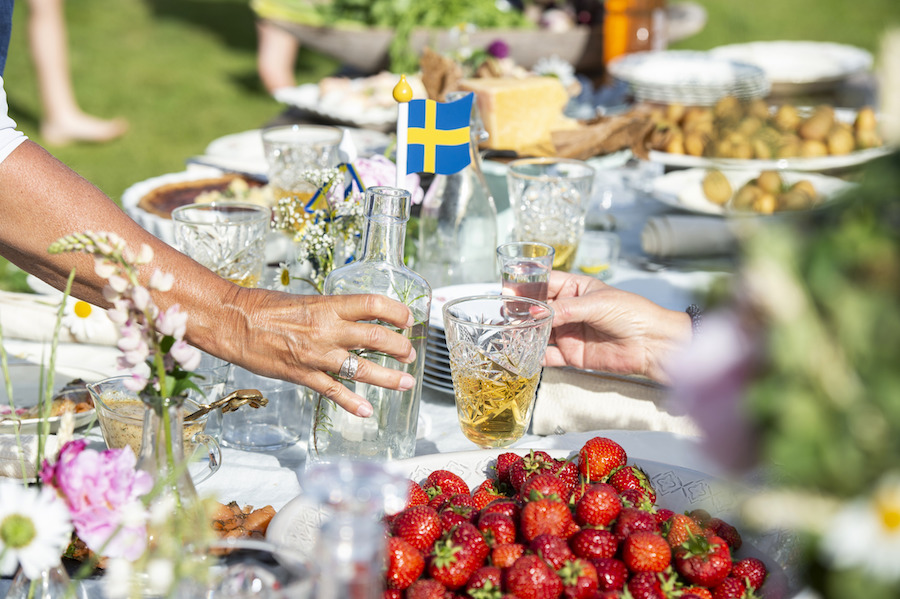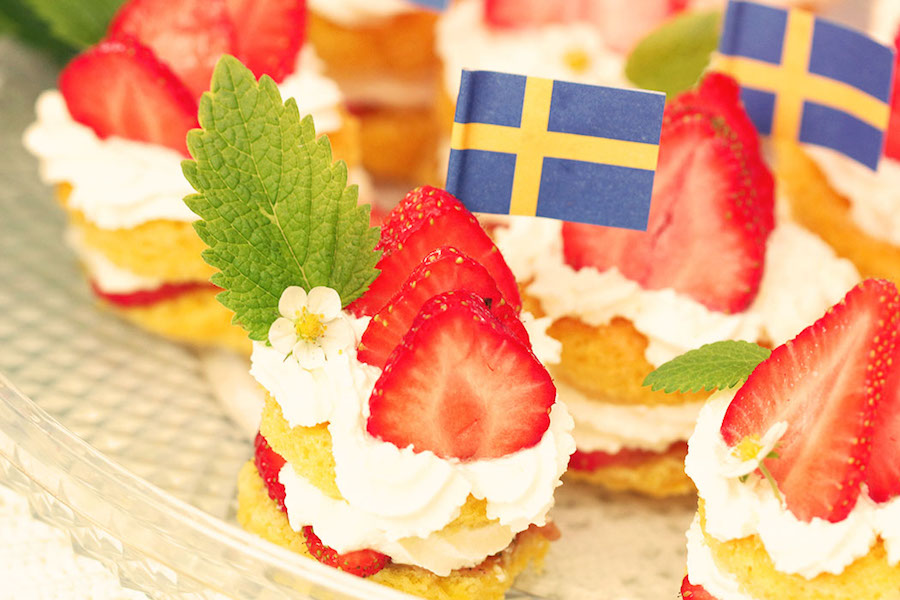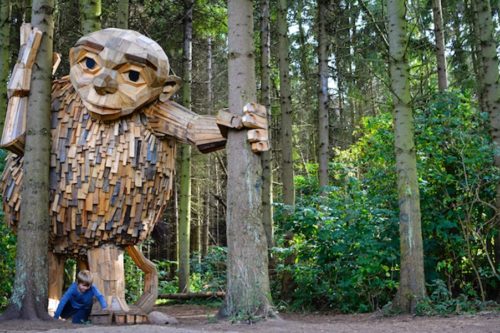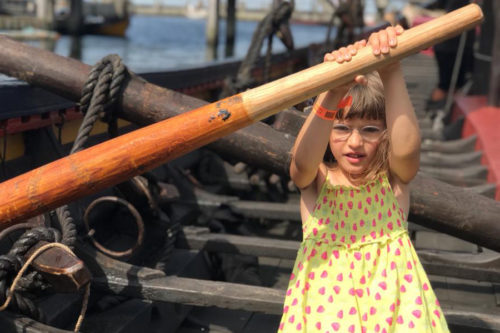Summer is fast approaching, and with it one of Scandinavia’s most emblematic festivals: Midsummer, celebrating the longest day of the year. In Sweden, it’s known as Midsommar and is generally held on the weekend before 24 June, while in Denmark and Norway, where it’s known as Sankthans, it’s celebrated on 24 June, in keeping with tradition. Whether you’re in Norway, Sweden or Denmark, keep your fingers crossed for good weather and immerse yourself in the festive atmosphere of these folkloric celebrations, a unique opportunity to discover the local traditions and culture!
A common origin
Saint John the Baptist, the originator of Saint John’s Day, is a major figure in Christianity. He was born on 24 June and is often considered to be a cousin of Jesus Christ, as he was born 6 months to the day before the latter was born.
The account of the birth of John the Baptist in the Gospel of Luke is just as colourful, and is a kind of premonition (or dress rehearsal) of the immaculate conception of Jesus Christ.
Zechariah, an old priest in the temple of Jerusalem, married to a barren woman who suffers from not being able to bear children, is told by the angel Gabriel of the birth of a child who will become a prophet. Zechariah, sceptical, refused to believe it and was punished by God, who deprived him of speech throughout his wife’s pregnancy. He only regained the use of speech at John’s circumcision, when he recognised the child and began a hymn of praise.
From this common origin, each country subsequently developed traditions that were more or less linked to and/or influenced by other, more pagan references.
In Norway, Jonsok and Sankthans
To celebrate the longest day of the year, the day of the summer solstice, or Sankthans as it is known in Norway, the Norwegians have a very special tradition that borrows more from the pre-Christian period than from Saint John’s Day itself.
Sankthans is a contraction of St Johannes (St John) and is celebrated on 24 June every year in Norway.
This celebration, which has always been linked to the summer solstice, revolves around nature-related rituals in the hope of a good harvest in autumn. At this time of year, plants were thought to have miraculous healing powers, which is why medicinal plants were gathered on this night. Fires were also lit to protect people from supernatural forces, whose evil activity was believed to intensify when the sun began to fall again. Witches also took to the skies on Midsummer’s Eve to encounter other evil forces.
Jonsok means “vigil of St John”, in memory of St John the Baptist, and is celebrated on 23 June in Norway. St John’s Eve was an important vigil in the Catholic era, when pilgrimages were organised.
On Midsummer’s Eve, it was also customary to hold mock marriages between adults or between children. These parodies of adult wedding celebrations were intended to symbolise the seed that gives birth to new life.
In Norway today, on the evening of 23 June, a huge fire is lit on the beach to celebrate the summer solstice. For the past few weeks, dry wood has been gathered to form a bonfire on the water’s edge. It has to be beautiful and well stocked so that the fire can burn for a very long time.
The most impressive and largest bonfire in the world takes place in the town of Ålesund, often referred to as Norway’s most beautiful town and situated to the north-east of Bergen (around 230 km).
Wooden pallets are stacked up to a height of 40 metres. Between 30 and 40 people get together every year to build this huge wooden tower. It is built on an artificial island and then set alight for an extraordinary celebration.
👉 Would you like to find out more about Scandinavian history and culture in Norway? Immerse yourself in the heart of Oslo with our guided tours specially designed for children! From fascinating anecdotes to interactive activities, young explorers will discover the Norwegian capital in a fun and immersive way. Find out more here: Scandikidstours – Guided tours for children in Oslo.
👉 And for a more in-depth discovery, explore Oslo from a new angle with our guided tours in French, suitable for all ages and all tastes! Discover all our offers here: Oslomania – French-language guided tours in Oslo.
In Denmark Sankthans, Midsommervisen and fireworks
Danish traditions linked to Midsummer’s Day (or Sankthans) are very similar to those in Norway: Denmark also celebrates this festival on the evening of 23 June, but also on 24 June, as is the original tradition.
The Danes start with dinner at home with friends and family before heading out to join in the festivities on the beaches or lakeshores. They gather dry branches to light nightly bonfires, a source of warmth around which young and old gather to listen to Midsommervisen, a text written in 1885 by the Danish poet Holger Drachmann.
At the centre of the blaze is a mannequin of a witch. This evil creature is consumed by the flames to frighten off the supernatural forces. When the clock strikes midnight, fireworks can also erupt across the country.
👉 Would you like to find out more about Scandinavian history and culture in Denmark? Discover our guided tours specially designed for children in Copenhagen! From fun discoveries to fascinating anecdotes, our tours are designed to captivate young and old alike. Go to : Scandikidstours – Guided tours for children in Copenhagen.
👉 And for even more in-depth exploration, we also offer a wide selection of guided tours in French for all ages and interests. Find all our tours here: Nordic Insite – French guided tours in Copenhagen.
In Sweden, Midsommar is a big party!
In Sweden, we don’t call it Midsummer’s Day, but Midsommar. For the Swedes, this celebration is undoubtedly the most important of the year (along with Christmas) and lasts almost 3 days.
Until 1952, Midsommar was always celebrated on 24 June, as in the rest of Scandinavia. But since 1953, this celebration has no longer been on a fixed date and always falls on a Friday, between 19 and 25 June. This Friday is a public holiday for the Swedes and is generally known in the Swedish calendar as Midsommarafton (Midsummer Eve). So after a week of work, it’s a chance to leave the city and get together in the countryside with family and friends to celebrate summer and the longest days of the year. If you’re lucky and it’s close to the solstice, the sun might even be shining almost everywhere over the country.
The majstång
The Swedish symbol of Midsommar is a tall flagpole called the midsommarstång or majstång. This word comes from the Old Swedish word maja, which means “to dress/decorate with green leaves”, and stång, which means “mast”. In every village and on every island, the centrepiece of the festival is this big flagpole that everyone decorates with foliage and flowers at the start of the day. Once it’s up, it’s time to start dancing. Wreathed in flower crowns, the Swedes dance around the flagpole to traditional music. Young and old alike join in the frog dance and the carousel dance.
New potatoes, herring and midsommartårta
But what would Midsommar be without its traditional dishes? On the picnic tablecloth, or on a table carefully decorated to suit the occasion, you’ll always find new potatoes, usually seasoned with dill and sometimes cream, herring marinated in various ways, and not forgetting strawberries for dessert.
The strawberries, which are very popular at this time of year (many are grown locally), can be presented in large salad bowls (as shown in the photo) or a cake can be made with the strawberries and Swedish cream (the famous grädde). There are lots of recipes for making this cake, known as Midsommartårta, and it’s often a great opportunity to show off your pastry-making skills.
Adults will even wash down their meal with snaps (brandy made from cereals or potatoes) to make the party even more merry but be careful, after a few drinks it can be dangerous to do the frog dance with your children around the flagpole.
👉 Would you like to find out more about Scandinavian history and culture in Sweden? Discover Stockholm with our guided tours specially designed for children! Through captivating stories and interactive activities, your little explorers will bury themselves into the history of the Swedish capital in a fun and immersive way. Find out more here: Scandikidstours – Guided tours for children in Stockholm.
👉 And if you want to go even further, explore Stockholm and its cultural treasures with guided tours for all ages! Discover all our offers here: Stockholmalacarte – Guided tours in Stockholm.
As you can see, the Scandinavian traditions surrounding the summer solstice are well worth sharing with family and friends. Have a great summer!
Marie-Cerise and Virginie, 16/06/2020
(last updated: 27 March 2025)


